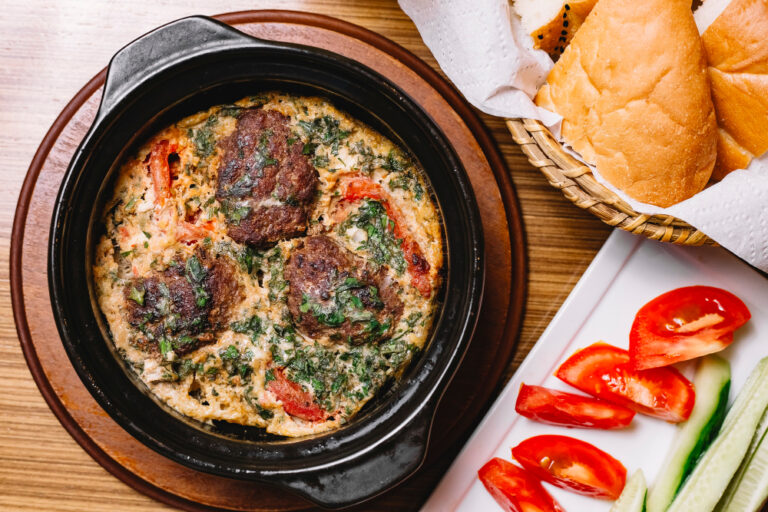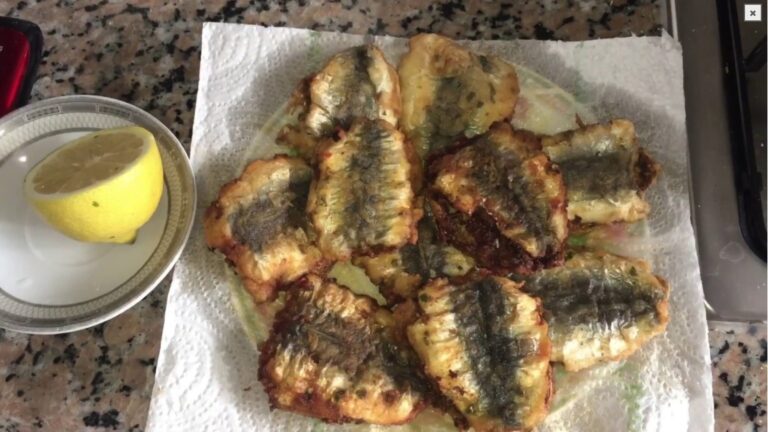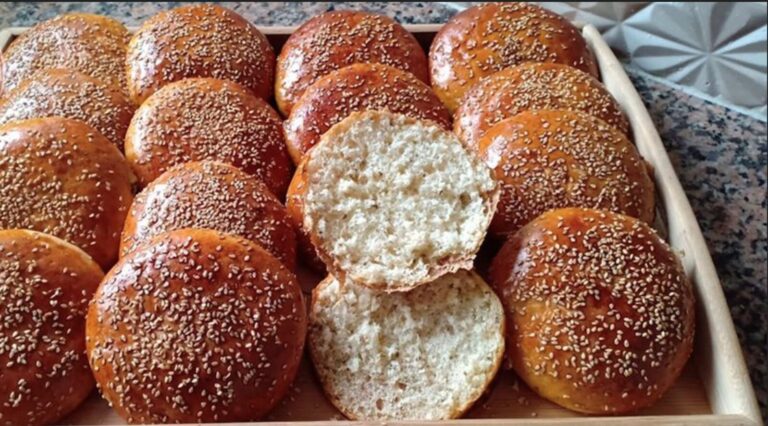
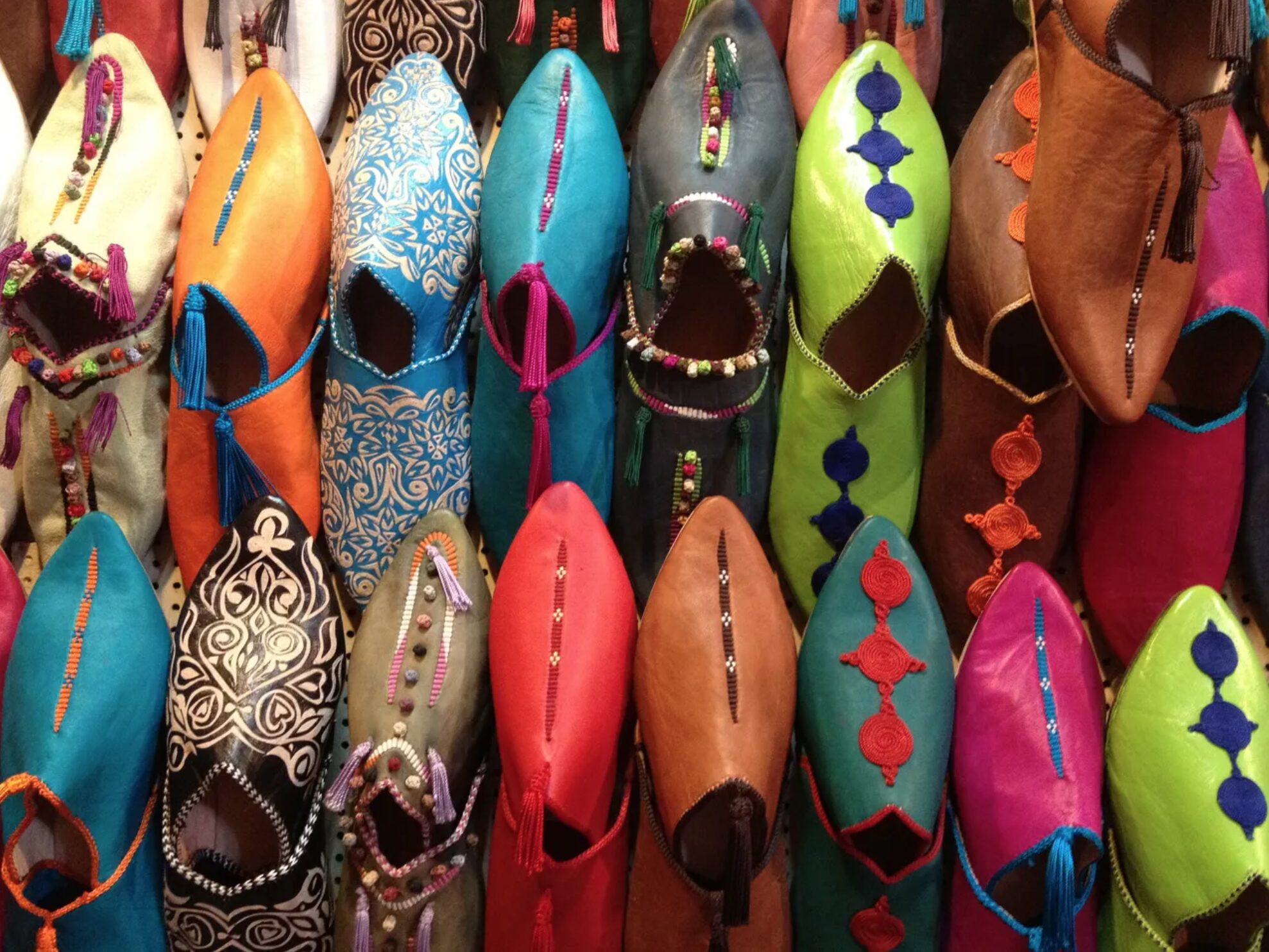
There are few items that symbolize Morocco’s cultural soul as elegantly as the balgha — the traditional Moroccan slipper. Soft, handcrafted, and unmistakably stylish, this timeless piece of footwear has walked through history, from the bustling souks of Marrakech to global fashion runways.
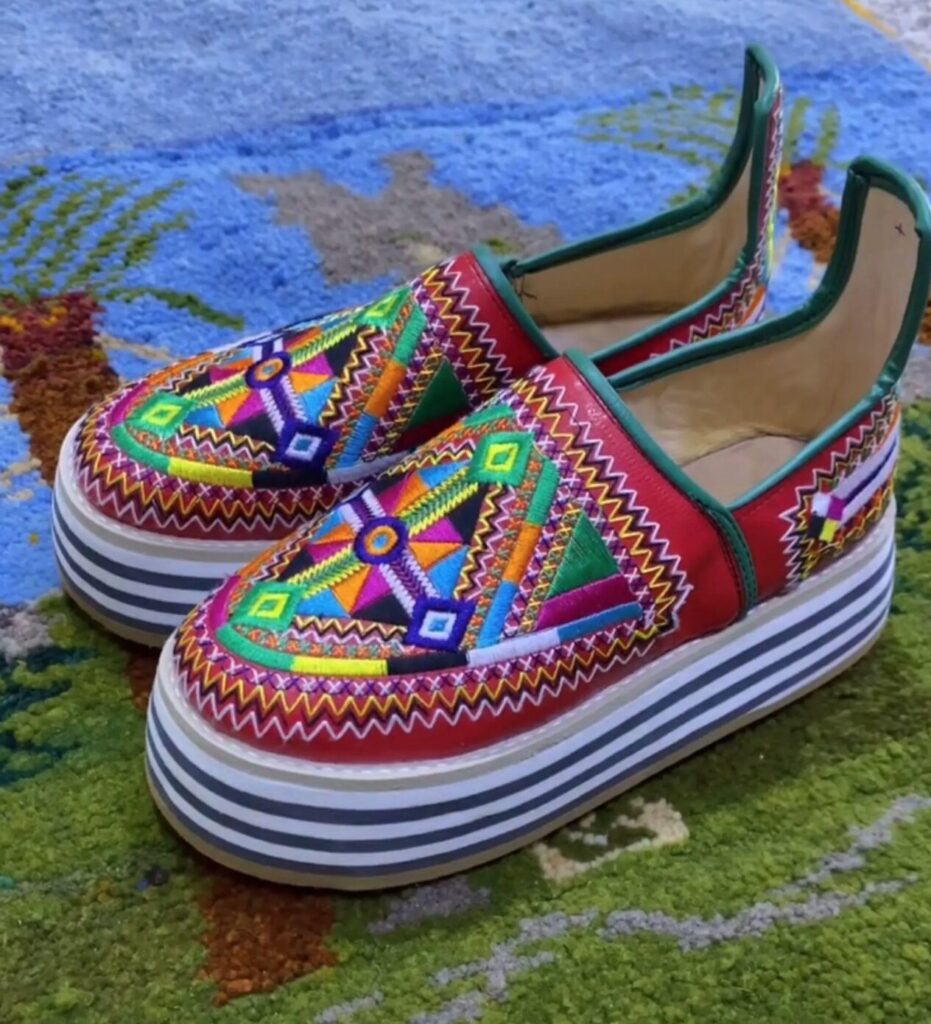
In this guide, “From Souks to Style: The Moroccan Balgha Journey,” we’ll explore how a simple leather slipper became an emblem of Moroccan identity, artistry, and modern design. Whether you’re wandering through the ancient alleys of Fez or shopping in Marrakech’s vibrant souks, the balgha remains a symbol of Morocco’s enduring blend of tradition and trend.
The Origins of the Moroccan Balgha
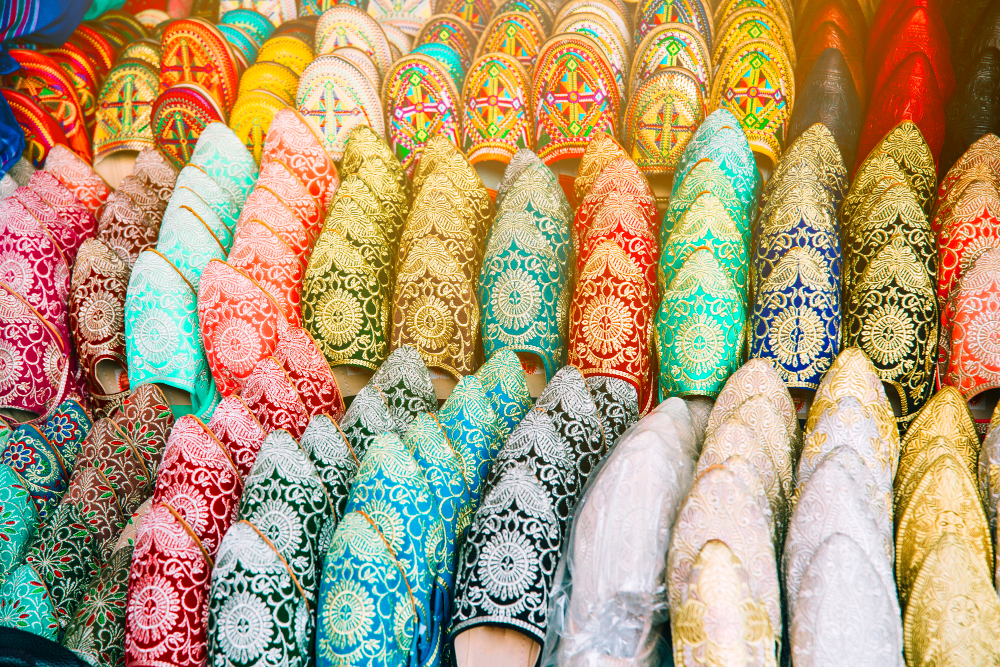
The balgha (also called babouche in French) traces its roots back centuries. Historically worn by both men and women across Morocco, it was originally a symbol of comfort and practicality. Made from soft, natural leather, the balgha was ideal for Morocco’s warm climate and social customs that favored indoor shoes.
Craftsmen, known as maalmin, would shape each pair by hand using locally sourced materials — goat, camel, or sheep leather. The process, often passed down through generations, reflected Morocco’s deep respect for craftsmanship.
In earlier times, the type and color of balgha could reflect a person’s region or status. Yellow balghas were commonly worn by men in cities like Fez, while red and embroidered ones were reserved for special occasions or women. Over time, the balgha became more than just footwear — it evolved into a form of cultural expression.
From Souks to Modern Style
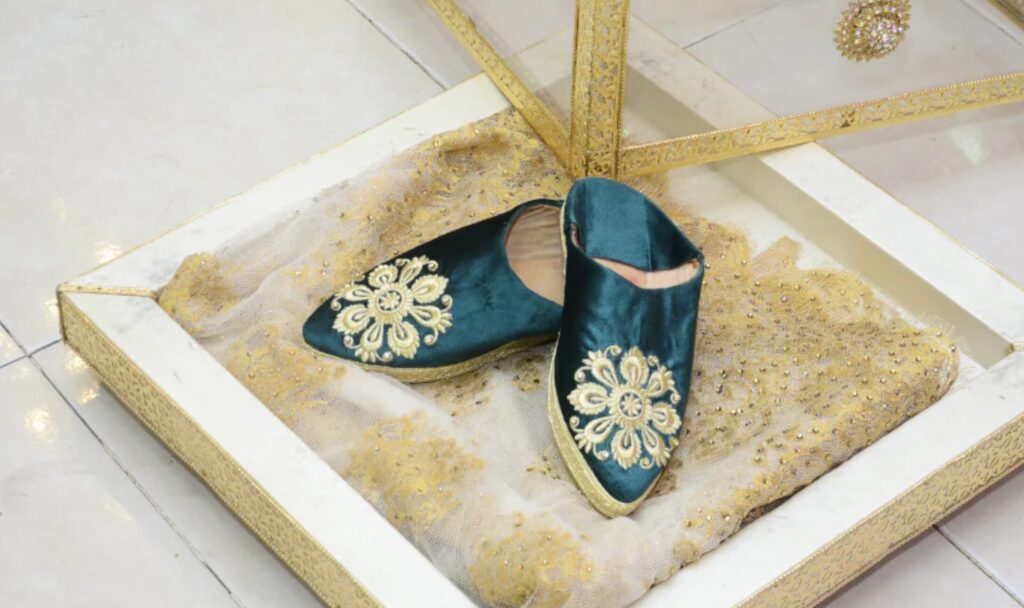
The Souks: Where It All Begins
To truly appreciate the balgha, one must visit Morocco’s traditional markets, or souks. In cities such as Marrakech, Fez, and Meknes, the Souk Semmarine and Souk Chouara are famous for their leather artisans. The air is rich with the scent of tanned hides and natural dyes.
Here, you can watch artisans cut, shape, and stitch the balghas by hand. The rhythmic sound of hammers and needles, the gleam of colorful slippers lining the walls, and the artisans’ pride in their craft make this experience unforgettable.
Modern Reinvention: Tradition Meets Fashion
In recent years, the balgha has stepped beyond Morocco’s borders. Global designers have reimagined it, incorporating new colors, embroidery, and even heels. Yet, the essence remains the same — comfort, elegance, and Moroccan heritage.
Boutiques in Casablanca and Marrakech now sell contemporary versions made with suede, velvet, or metallic finishes. From fashion influencers to celebrities, the balgha has found a new audience who cherish its authenticity and minimalist beauty.
Travel Tips and Cultural Insights
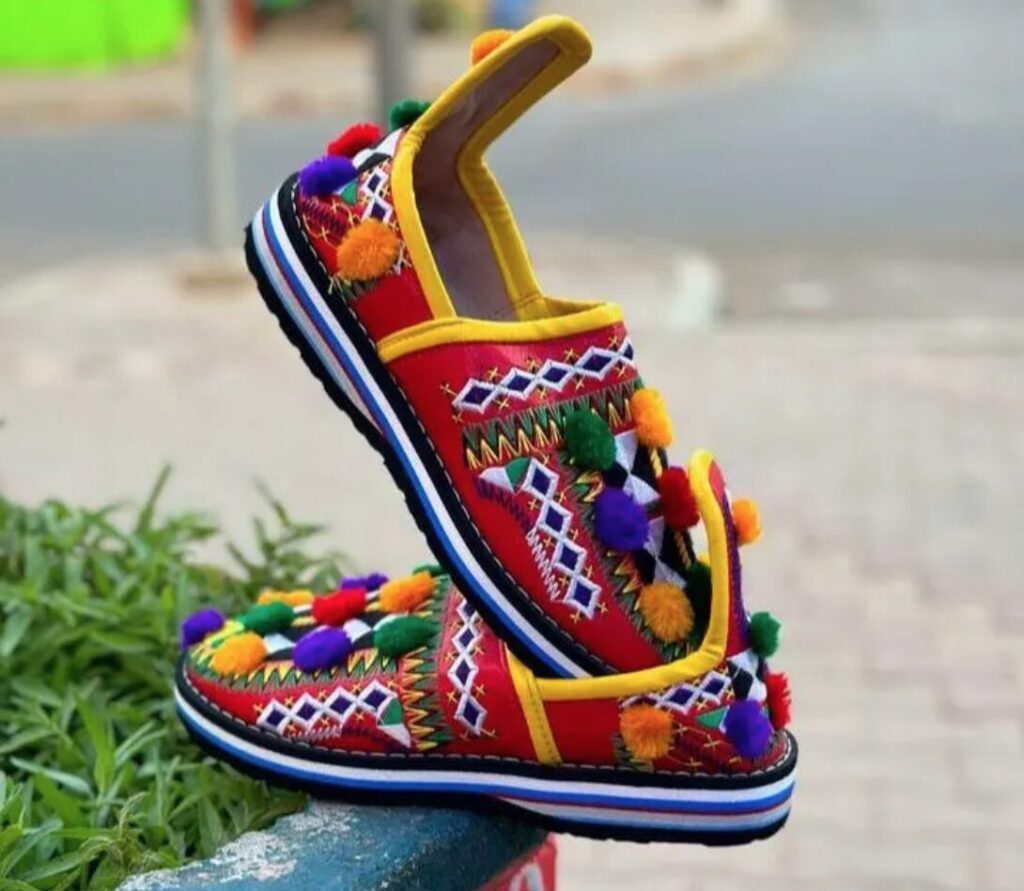
If you’re traveling to Morocco and wish to experience or buy authentic balghas, here are a few helpful tips:
- Head to the Souks Early: Morning visits to the souks allow you to see artisans at work before crowds arrive.
- Negotiate with Respect: Bargaining is part of Moroccan culture. Smile, engage, and enjoy the friendly exchange — it’s all part of the experience.
- Know the Quality: Genuine balghas are soft, flexible, and smell of natural leather. Avoid synthetic or overly shiny versions.
- Try Them On: Moroccan balghas don’t always fit like Western shoes — they’re meant to mold to your feet over time.
- Support Local Artisans: Buying directly from craftspeople helps preserve Morocco’s traditional leatherworking industry.
When walking through Morocco’s medinas, take note of the artisans’ attention to detail. Each pair of balghas tells a story — one of patience, creativity, and heritage.
Real-World Stories and Traveler Impressions
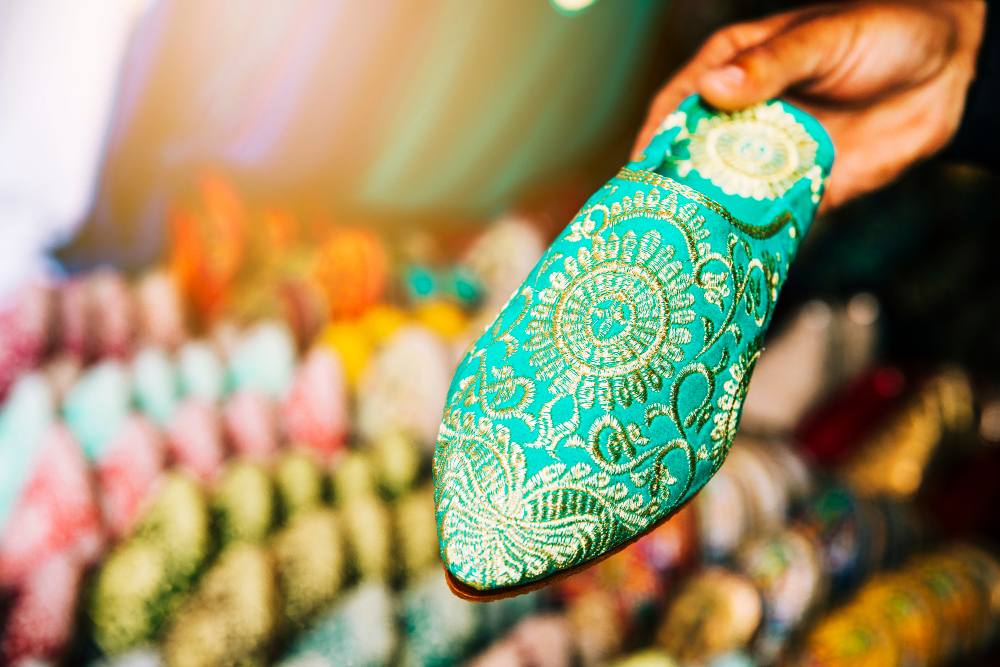
Many travelers remember their first pair of balghas as more than just a souvenir.
Sophia, a traveler from Spain, recalls visiting the Fez leather tanneries:
“The smell of the natural dyes was strong, but the process was beautiful. Watching the artisans transform raw leather into elegant balghas felt like witnessing living history.”
Omar, a Marrakech local and craftsman, shares:
“I learned from my father, who learned from his father. Making balghas isn’t just a job — it’s a way to keep Moroccan identity alive. Every stitch reminds me of our past.”
These stories reveal the balgha’s cultural depth. It’s more than fashion — it’s connection, memory, and artistry all in one.
Future of the Moroccan Balgha
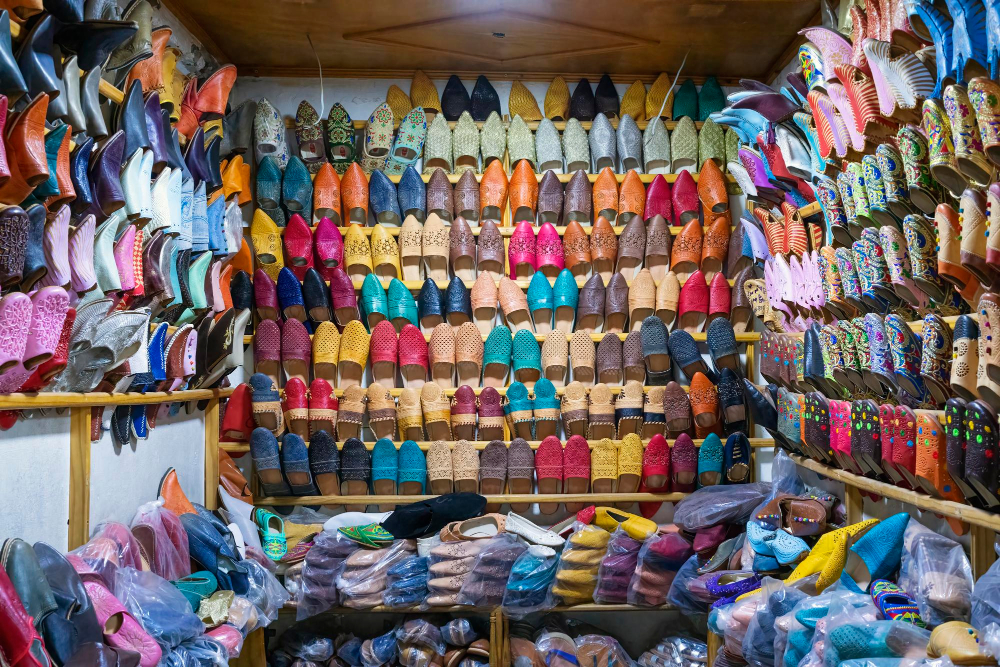
The future of the Moroccan balgha looks bright, thanks to both tourism and global design movements that value handmade authenticity. Younger Moroccan designers are breathing new life into the tradition by experimenting with materials like recycled leather and eco-friendly dyes.
In Marrakech, concept stores are showcasing modernized balghas with contemporary twists — from bold color patterns to urban streetwear combinations. These innovations prove that heritage and modernity can coexist beautifully.
As Morocco continues to attract travelers seeking authentic experiences, the balgha’s journey — from souks to style — remains a living story. It’s a perfect example of how tradition adapts and thrives in the modern world.
FAQ: The Moroccan Balgha Journey
What is a Moroccan balgha?
A balgha is a traditional Moroccan leather slipper, usually backless, handmade by skilled artisans using natural leather.
Where can I buy authentic balghas in Morocco?
You can find the best quality balghas in Marrakech, Fez, and Meknes — especially in souks known for leather craftsmanship like Souk Semmarine.
Are balghas comfortable for daily wear?
Yes! They’re lightweight, breathable, and designed for comfort. Over time, genuine leather balghas adapt to the shape of your feet.
Are there different types of balghas?
Absolutely. Men traditionally wear yellow or brown balghas, while women’s versions come in vibrant colors, embroidered designs, or with embellishments.
How can I tell if a balgha is handmade?
Look for small imperfections — they’re a sign of authenticity. Handmade balghas will have soft soles, even stitching, and the aroma of natural leather.
Conclusion
From ancient souks to high-end fashion boutiques, the Moroccan balgha continues to walk gracefully between history and modernity. The journey described in “From Souks to Style: The Moroccan Balgha Journey” is more than a fashion story — it’s a story of cultural preservation, creativity, and pride.
When visiting Morocco, make time to wander through the souks, meet local artisans, and perhaps take home a pair of balghas — not just as a souvenir, but as a piece of Moroccan tradition you can wear.
Whether you wear them on the cobblestone streets of Fez or the chic avenues of Paris, your balghas will carry with them the story of Morocco’s artistry, elegance, and soul.
–Plan your Moroccan journey today — and let every step you take remind you of the beauty that begins in the souks and ends in timeless style.

